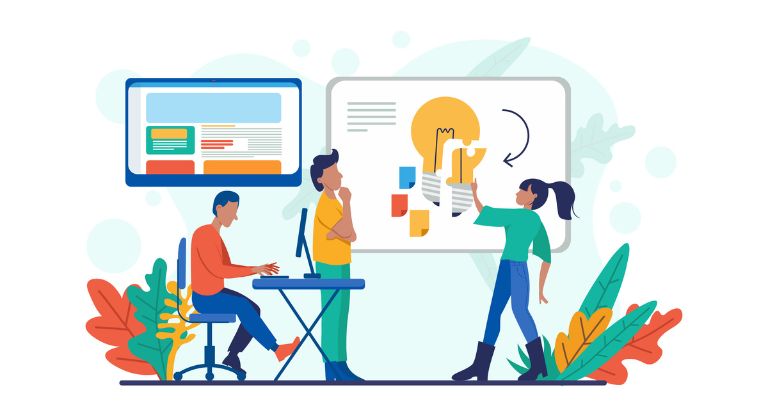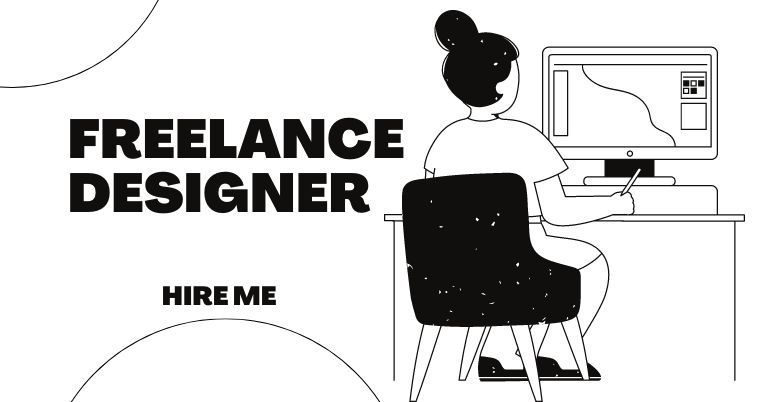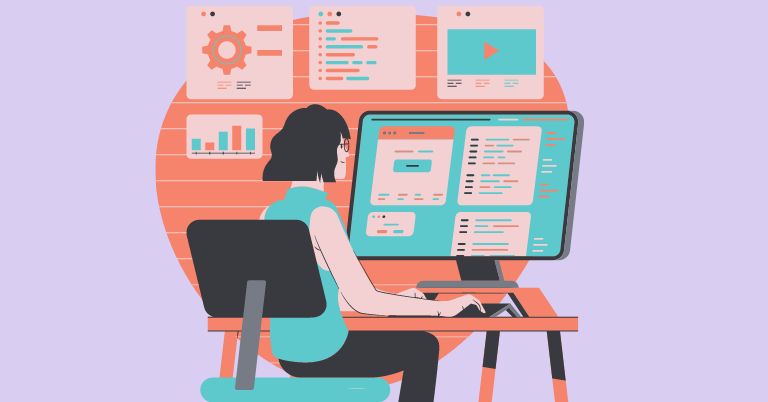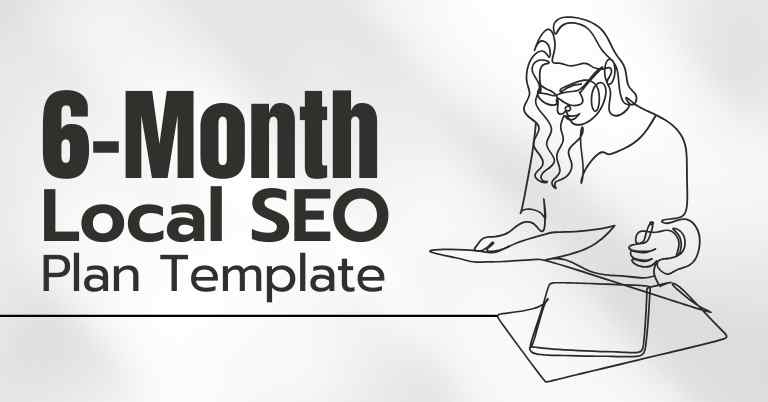Are you passionate about graphic design and ready to take your skills to the next level? If you’re wondering, “How can I start freelancing in graphic designing?” you’re in the right place. Freelancing in graphic design can be an exciting and rewarding career choice, allowing you to showcase your creativity and work on diverse projects. In this comprehensive guide, we’ll walk you through the essential steps to launch a successful freelancing career in graphic design.
To start freelancing in graphic design, you should build a strong portfolio showcasing your skills and services. Once you have a solid portfolio, create a professional website and social media presence to attract potential clients and promote your work.
Engaging in online communities and attending design-related events can also help you network and find freelance opportunities. Additionally, consider offering your services at competitive rates, delivering high-quality work, and consistently meeting deadlines to establish a positive reputation in the industry.
Starting a freelance career can be an exciting journey toward independence and flexibility. To unlock the secrets to successful freelancing, it’s essential to begin with a clear plan. First, identify your skills and strengths – what services can you offer to potential clients? Next, create a strong online presence through platforms like LinkedIn, personal websites, or freelancing websites. Craft a compelling portfolio showcasing your past work to demonstrate your capabilities. Setting competitive yet reasonable pricing is crucial to attracting clients while valuing your expertise. Effective communication skills are key – clearly understand the client’s needs and keep them updated throughout the project. Consistency and reliability will build your reputation. Networking is also invaluable; connect with fellow freelancers and potential clients to expand your reach. Remember, freelancing requires discipline and time management, as well as adapting to evolving market trends. By laying a solid foundation and continuously improving your skills, you can thrive as a successful freelancer.
Let's See the Topic Overview
Understanding The Freelancing Market In Graphic Designing
Looking to start freelancing in graphic design? Gain insights into the freelancing market in graphic design and explore the steps you need to take to begin your journey in this creative field. Find tips, advice, and valuable information to navigate the world of freelance graphic design successfully.
The Growing Demand For Graphic Design Freelancers
- Many businesses today are realizing the importance of visually appealing content to attract and engage their target audience.
- The demand for skilled graphic designers is on the rise as companies strive to create captivating designs for their websites, social media, branding materials, and more.
- Freelancing in graphic designing allows you to tap into this growing market and offer your creative services to clients worldwide.
- By taking advantage of the increasing demand for graphic design freelancers, you can carve a successful career in this dynamic field.
Benefits And Advantages Of Freelancing In Graphic Designing
- Flexibility: As a graphic design freelancer, you have the freedom to choose your working hours, projects, and clients.
- Diverse projects: Freelancing exposes you to a wide range of projects, allowing you to work on different types of designs and expand your skill set.
- Higher earning potential: By setting your own rates and taking on multiple clients, you can potentially earn more compared to a full-time job.
- Creative freedom: Freelancing allows you to express your creativity and work on projects that align with your artistic vision.
- Increased exposure: Working with various clients and projects can help you build a strong portfolio, which is essential for attracting more clients in the future.
- Professional growth: Freelancing challenges you to constantly learn and improve your graphic designing skills, helping you stay competitive in the industry.
Assessing Your Skills And Competencies As A Graphic Designer
- Evaluate your technical skills: Take an inventory of your software proficiency, such as adobe photoshop, illustrator, InDesign, and other relevant tools.
- Assess your design aesthetics: Understand your strengths and weaknesses when it comes to visual design, typography, color theory, and layout composition.
- Identify your strengths: Determine the areas where you excel, such as logo design, web design, print materials, or illustration. These strengths will help you find your niche.
- Identify areas for improvement: Recognize the skills or techniques you need to enhance to stay competitive and grow as a graphic designer.
Identifying Your Target Audience And Niche
- Define your target audience: Identify the specific industries or business sectors that you want to serve as a graphic designer. Examples can include healthcare, technology, fashion, or hospitality.
- Analyze their needs: Research the design requirements and preferences of your target audience, understanding their aesthetic sensibilities and communication goals.
- Focus on a lucrative niche: Find a niche within graphic design where you can differentiate yourself and offer specialized services. This can include logo design for startups, packaging design for organic products, or social media graphics for influencers.
Researching The Existing Freelancing Market For Graphic Designers
- Study existing freelancing platforms: Explore popular freelancing platforms like Upwork, freelancer, and 99designs to understand the demand for graphic designers, pricing trends, and competition.
- Analyze competitor profiles: Review the profiles of successful graphic design freelancers in your niche, analyzing their portfolios, rates, and client feedback.
- Identify market gaps: Look for opportunities where you can stand out from the competition by offering unique services, better customer experience, or specialized expertise.
- Stay updated on industry trends: Keep abreast of the latest graphic design trends, emerging technologies, and evolving client preferences to position yourself as a cutting-edge freelancer.
Building A Strong Freelancing Brand In Graphic Designing

Starting a successful freelancing career in graphic designing requires building a strong personal brand, showcasing your unique skills and expertise, and creating a compelling portfolio. By establishing yourself as a reliable and talented graphic designer, you can attract clients and opportunities in the competitive freelance market.
Starting a career as a freelance graphic designer can be an exciting and rewarding journey. Building a strong freelancing brand is key to attracting clients and standing out in a competitive market. In this section, we will explore some essential steps to help you develop a unique brand identity and visual style, create a compelling portfolio, establish an online presence, utilize social media platforms, and build valuable connections within the industry.
Developing A Unique Brand Identity And Visual Style:
- Define your target audience: Identify the types of clients you want to work with and understand their needs and preferences.
- Craft a compelling brand story: Communicate your values, expertise, and passion to connect with potential clients on a deeper level.
- Design a memorable logo: Create a professional and visually appealing logo that represents your brand and resonates with your target audience.
- Choose a consistent color palette and font: Select a set of colors and fonts that reflect your brand personality and use them consistently across your marketing materials.
- Develop a unique visual style: Experiment with different design elements and techniques to create a signature style that sets you apart from your competition.
Creating A Compelling Portfolio That Showcases Your Best Work:
- Curate your portfolio: Select your best and most diverse design projects that highlight your skills and expertise.
- Organize your work effectively: Group your projects into relevant categories and provide clear descriptions for each piece.
- Showcase your process: Include sketches, drafts, and iterations to demonstrate your creative problem-solving abilities.
- Highlight client testimonials and case studies: Incorporate feedback and success stories from satisfied clients to build credibility and trust.
Establishing An Online Presence Through A Professional Website Or Blog:
- Create a user-friendly website: Build a well-designed website that is easy to navigate and showcases your work prominently.
- Optimize for search engines: Use relevant keywords in your website content and meta tags to improve your visibility in search engine rankings.
- Write informative blog posts: Share your knowledge and insights through thoughtful blog articles, showcasing your expertise and attracting potential clients.
- Include a clear contact section: Make it easy for visitors to get in touch by providing clear contact information and a contact form.
Utilizing Social Media Platforms To Connect With Potential Clients:
- Identify the right platforms: Determine which social media platforms your target audience is most active on and focus your efforts there.
- Create engaging content: Share your design work, tips, tutorials, and industry insights to captivate your audience.
- Engage with your audience: Respond to comments and messages promptly, and actively participate in relevant design communities and discussions.
- Collaborate with influencers: Seek opportunities to collaborate with influencers and industry professionals to expand your reach and gain exposure.
Networking And Building Relationships With Influencers And Industry Professionals:
- Attend industry events and conferences: Participate in workshops, seminars, and networking events to meet fellow designers and potential clients.
- Join design communities and forums: Engage in discussions, share your expertise, and build valuable connections with like-minded professionals.
- Collaborate with other freelancers and agencies: Partner with complementary freelancers or agencies to expand your services and pool of potential clients.
- Provide value to others: Offer your expertise, advice, or resources to help others in the design community. This generosity can lead to fruitful relationships and referrals.
Remember, building a strong freelancing brand takes time and effort. By developing a unique brand identity, creating an impressive portfolio, establishing an online presence, utilizing social media platforms, and building relationships within the industry, you can set yourself up for success as a freelance graphic designer.
Marketing And Promoting Your Freelance Graphic Design Business
Starting a freelance graphic design business involves effective marketing and promotion. Learn how to kickstart your freelancing journey in the graphic design field and attract clients with strategic marketing techniques.
Starting a freelance graphic design business can be an exciting journey filled with creative opportunities. However, to succeed in this competitive field, you need to effectively market and promote your services. By developing a strong marketing strategy, utilizing SEO techniques, leveraging social media, building a personal brand, and utilizing online marketplaces, you can attract clients and projects.
Let’s dive into each of these strategies in detail:

Developing A Marketing Strategy To Reach Your Target Audience:
- Identify your target audience: Determine the specific market segment you want to cater to, such as small businesses, startups, or e-commerce companies.
- Research your competitors: Analyze the graphic design services offered by other freelancers or agencies targeting the same audience to gain insight into their strategies.
- Define your unique selling proposition (USP): Identify what sets you apart from other graphic designers and highlight it in your marketing materials.
- Set clear goals: Establish specific and measurable objectives for your marketing efforts, such as the number of clients, projects, or revenue you aim to achieve.
Using Search Engine Optimization Techniques To Boost Your Online Visibility:
- Conduct keyword research: Identify relevant keywords and phrases that potential clients might use when searching for graphic design services.
- Optimize your website: Incorporate these keywords naturally into your website’s content, headings, meta tags, and URLs to improve search engine rankings.
- Create high-quality content: Publish blog posts, case studies, or tutorials that not only showcase your expertise but also attract organic traffic from search engines.
- Build backlinks: Seek opportunities to have reputable websites link back to your portfolio or blog, as this can significantly improve your website’s authority and visibility.
Leveraging Social Media Marketing To Attract Clients And Projects:
- Choose the right platforms: Determine which social media platforms your target audience is most active on, such as Instagram, LinkedIn, or Behance.
- Share your work: Regularly post your design projects, client testimonials, and behind-the-scenes insights to showcase your skills and attract potential clients.
- Engage with the community: Like, comment, and share content from other designers or clients to build relationships and expand your network.
- Utilize paid advertising: Consider running targeted ads on platforms like Facebook or Instagram to reach a wider audience and generate leads.
Building A Strong Personal Brand Through Content Marketing:
- Create a blog or portfolio: Showcase your work, expertise, and industry insights by regularly posting valuable content on your website.
- Establish yourself as an industry authority: Share your knowledge through guest blogging, podcast interviews, or speaking engagements to position yourself as a leader in graphic design.
- Network with influencers: Collaborate with influential bloggers or social media personalities in your industry to increase your brand visibility and reach.
Utilizing Online Marketplaces And Freelance Platforms:
- Join popular freelance platforms: Sign up on platforms such as Upwork, Fiverr, or Freelancer to gain exposure to potential clients actively searching for graphic design services.
- Create a compelling profile: Craft an engaging profile that showcases your skills, portfolio, and client testimonials to make a strong first impression.
- Stay active and responsive: Regularly update your profile, bid on relevant projects, and provide timely responses to client inquiries to build credibility and establish rapport.
By implementing these marketing strategies, you can effectively promote your freelance graphic design business and attract clients and projects. With dedication, perseverance, and a strong online presence, you can establish yourself as a successful freelance graphic designer in the competitive market.
Setting Up Your Freelance Business And Legal Considerations
Starting a freelance graphic designing business involves understanding the legal considerations. Learn how to set up your freelance business and navigate through the necessary legalities to kickstart your career in graphic design.
Deciding On The Legal Structure Of Your Graphic Design Freelance Business:
- Sole proprietorship: You can operate under your own name without any legal formalities, but keep in mind that you will personally be liable for any debts or legal issues.
- Partnership: If you plan to work with others, you can form a partnership where all partners share the profits, losses, and responsibilities.
- Limited liability company (LLC): This structure combines the flexibility of a sole proprietorship with the limited liability protection of a corporation.
- Corporation: This legal structure provides the most protection, but it requires more paperwork and formalities, such as creating a board of directors and holding regular meetings.
Registering Your Business And Obtaining Necessary Licenses And Permits:
- Choose a business name: Select a unique and catchy name for your graphic design freelance business.
- Register your business: Check with your local government or small business administration to understand the registration process and any required fees.
- Obtain necessary licenses and permits: Depending on your location and the services you offer, you may need specific licenses or permits. Research the requirements in your area.
Understanding Tax Obligations And Financial Management:
- Obtain an employer identification number (EIN): If you plan to hire employees or operate as anything other than a sole proprietorship, you will need an EIN for tax purposes.
- Keep track of expenses and income: Use accounting software or tools to manage your finances effectively and keep records for tax purposes.
- Understand tax obligations: Consult with a tax professional to understand your tax obligations as a freelance graphic designer, including self-employment taxes, deductions, and deadlines.
Creating Contracts, Proposals, And Pricing Structures For Your Services:
- Contracts: Develop clear and comprehensive contracts that outline the scope of work, payment terms, delivery dates, and any additional provisions to protect both parties.
- Proposals: Craft professional and persuasive proposals that showcase your abilities and highlight the value you can provide to potential clients.
- Pricing structures: Determine how you will charge for your services—per project, by the hour, or on a retainer basis. Research industry standards to ensure your pricing is competitive.
Protecting Your Intellectual Property And Dealing With Copyright Issues:
- Register your work: Consider registering your designs with the copyright office to protect your intellectual property rights.
- Watermark your work: Adding a watermark to your designs can help deter unauthorized use and protect your copyright.
- Include usage rights and limitations: Clearly specify how clients can use your designs and any restrictions they must adhere to in your contracts and proposals.
Finding And Securing Freelance Graphic Design Projects
Looking to start freelancing in graphic design? Learn how to find and secure freelance graphic design projects with our practical guide. Gain valuable tips and insights on building your portfolio, networking, and showcasing your skills to attract clients.
Freelancing in graphic design can be a rewarding career choice for those with creative talent and a passion for visual communication. If you’re eager to kickstart your journey as a freelance graphic designer, it’s important to know how to find and secure lucrative projects.
In this section, we’ll explore some effective techniques and strategies to help you do just that.

Effective Techniques For Finding Freelance Graphic Design Opportunities:
- Develop a strong digital presence: Create a professional portfolio website to showcase your design skills and previous work.
- Leverage social media platforms: Use platforms like Instagram, Behance, and Dribble to showcase your design projects, attract potential clients, and network with other professionals.
- Join freelancing platforms: Sign up for popular freelancing websites such as Upwork, freelancer, and Fiverr to find graphic design gigs posted by clients worldwide.
- Explore niche-specific job boards: Visit industry-specific job boards and forums like Creative Hotlist, Smashing Magazine, and Aiga design jobs to find freelance graphic design opportunities.
- Attend networking events and design conferences: These events provide excellent opportunities to meet potential clients, fellow designers, and industry experts.
Applying For Job Postings And Crafting A Winning Proposal:
- Tailor your portfolio and proposal: Customize your portfolio and proposal to align with the client’s requirements and industry. Show relevant samples of your work and highlight your expertise in specific design styles or techniques.
- Demonstrate problem-solving skills: Clearly explain how you can provide creative solutions to the client’s design needs, emphasizing your ability to meet deadlines and deliver high-quality work.
- Showcase your unique selling points: Highlight what sets you apart from other designers, such as your experience in a particular niche, your unique design process, or your success in previous projects.
- Provide a clear pricing structure: Clearly outline your rates, including any additional fees for revisions or rush orders.
- Include strong testimonials or recommendations: If you have satisfied clients, include their positive feedback to build trust and credibility.
Building Relationships With Clients And Maintaining Customer Satisfaction:
- Communication is key: Maintain regular and clear communication with your clients to ensure that you are both on the same page throughout the project.
- Understand client expectations: Take the time to fully understand the client’s goals, preferences, and target audience to deliver designs that meet their vision.
- Be professional and reliable: Deliver projects on time, respond promptly to client inquiries, and be open to feedback and revisions.
- Provide exceptional customer service: Go the extra mile to exceed client expectations and build a positive reputation for yourself.
- Offer post-project support: Provide assistance after the project is completed, offering any necessary additional files or support that may be required.
Negotiating Contracts, Pricing, And Project Scope:
- Research industry standards: Familiarize yourself with the typical rates and fees charged by freelance graphic designers to ensure that your pricing is competitive and fair.
- Clearly define project scope: Clearly outline the project’s deliverables, deadlines, and any specific design requirements to avoid misunderstandings or scope creep.
- Be flexible but assertive: While it’s important to work collaboratively with clients, effectively communicate your design expertise and boundaries when discussing project terms.
- Put everything in writing: Ensure that all agreements, changes, and discussions are documented in a clear and concise contract to protect both parties.
Managing Multiple Projects And Deadlines Efficiently:
- Prioritize and plan: Create a clear workflow system to prioritize tasks and set realistic deadlines for each project.
- Use project management tools: Utilize project management software or apps to track progress, collaborate with clients, and manage multiple projects efficiently.
- Break down projects into smaller tasks: Divide projects into manageable segments to ensure that progress is made consistently and deadlines are met.
- Practice effective time management: Avoid procrastination by setting aside dedicated blocks of time for focused work and creating a schedule that allows for breaks and self-care.
By employing these techniques and strategies, you can increase your chances of finding and securing freelance graphic design projects. Remember, building a successful freelancing career in graphic design takes time, effort, and continuous learning, so stay motivated, upskill, and adapt to industry trends to stay competitive in this ever-evolving field.
Enhancing Your Skills And Staying Relevant In The Graphic Design Industry
Enhance your graphic design skills and stay relevant in the industry by starting your freelance journey. Discover new opportunities to showcase your talent, build your portfolio, and attract clients. Stay up-to-date with trends, network, and continuously improve to thrive as a freelance graphic designer.

In the rapidly evolving field of graphic design, continuously learning and upgrading your design skills is crucial to staying relevant and competitive. By investing time and effort into expanding your knowledge and honing your craft, you can position yourself as a sought-after freelance graphic designer.
Here are some effective strategies to help you enhance your skills and thrive in the industry:
Continuously Learning And Upgrading Your Design Skills:
- Engage in online courses or tutorials: Platforms like Udemy, Coursera, and Skillshare offer a wide range of design courses taught by industry professionals. Take advantage of these platforms to learn new techniques, stay updated on industry trends, and gain valuable insights.
- Follow design blogs and websites: Stay informed about the latest design trends, techniques, and tools by regularly reading reputable design blogs and websites. Some popular options include Smashing Magazine, Creative Bloq, and Awards.
- Attend design webinars and workshops: Participate in webinars and workshops conducted by experienced designers or professionals to gain practical knowledge and learn from their expertise. These events provide opportunities to network with fellow designers and expand your professional connections.
- Seek mentorship: Collaborating with experienced designers who can guide you and provide constructive feedback is invaluable. Seek out mentorship opportunities through design communities, professional networks, or industry-related events.
- Join design forums and communities: Engaging in online design forums and communities enables you to connect and interact with like-minded designers. It offers a platform to discuss design concepts, seek advice, and learn from the experiences of others in the field.
Exploring New Design Tools, Software, And Trends:
- Stay updated on design software: With ever-evolving design software, it is vital to keep abreast of the latest tools and features. Regularly explore updates and new releases of popular software such as Adobe Creative Suite (illustrator, photoshop, indesign) and other design-oriented software like Sketch and Figma.
- Experiment with new design trends: Embrace and experiment with current design trends to broaden your skillset and maintain relevance in the industry. Stay informed about popular design styles, color palettes, and visual elements that resonate with clients and target audiences.
- Explore emerging design tools: Continuously seek out new design tools and extensions that can enhance your workflow and efficiency. Tools like Canva, procreate, and Adobe XD can streamline your design process and expand your creative possibilities.
Participating In Design Competitions And Industry Events:
- Enter design competitions: Participating in design competitions provides an opportunity to showcase your skills, gain recognition, and receive feedback from industry experts. Many competitions offer substantial prizes or exposure, which can boost your professional profile.
- Attend design conferences and meetups: Attend industry events, conferences, and meetups to connect with other designers, learn from industry leaders, and gain exposure to the latest design trends. Networking at these events can lead to collaborations, referrals, and potential clients.
Engaging In Professional Development And Training Programs:
- Join design associations: Becoming a member of design associations like Aiga or the Graphic Artists Guild can provide access to valuable resources, professional development opportunities, and networking events. These associations often offer workshops, webinars, and mentorship programs.
- Pursue certification programs: Acquiring certifications in specialized areas of graphic design, such as UI/UK design or typography, can enhance your credibility and marketability. Institutions like the Interaction Design Foundation and Adobe offer certification programs that validate your skills.
- Enroll in design boot camps: Design boot camps provide intensive training in various design areas and enable you to gain practical skills in a short period. These programs often focus on real-world projects and provide valuable insights into the design industry.
Seeking Feedback And Evaluating Your Work For Continuous Improvement:
- Request feedback from peers and clients: Solicit constructive criticism from fellow designers, clients, or mentors to gain insights into your work. Actively incorporate feedback to improve your designs and refine your skillset.
- Perform self-evaluations: Regularly assess your design work to identify areas for improvement and growth. Analyze your designs critically, considering aspects such as composition, color theory, and user experience. Seek inspiration from other designers and strive to surpass previous levels of creativity and execution.
By continuously enhancing your graphic design skills, exploring new tools and trends, participating in industry events, engaging in professional development, and seeking feedback for improvement, you can succeed as a freelance graphic designer and maintain relevance in the dynamic world of graphic design.
Frequently Asked Questions
How Can I Start Freelancing In Graphic Designing?
Freelancing in graphic designing can be started by building a strong portfolio, showcasing your work on social media platforms, networking with other professionals, and creating a website to highlight your skills. It is also important to market yourself effectively and consistently deliver high-quality work to clients.
What Are The Essential Skills For A Graphic Designing Freelancer?
As a graphic designing freelancer, essential skills include proficiency in design software like adobe creative suite, a good eye for aesthetics, an Understanding of design principles, the Ability to communicate effectively with clients, and a strong sense of creativity and innovation. Continuous learning and staying updated with industry trends Are also important.
How Can I Find Freelance Graphic Design Projects?
Finding freelance graphic design projects can be done through various channels. Registering on freelancing platforms like Upwork and fiverr, networking with other professionals, utilizing social media platforms, creating an online portfolio, and reaching out to potential clients directly are effective ways to find freelance projects.
How Do I Price My Graphic Design Services As A Freelancer?
Determining the pricing for your graphic design services as a freelancer depends on factors such as your experience, the complexity of the project, the time required, and market rates. Researching industry standards, evaluating your skills, and considering the budget of the client will help you set a competitive and fair pricing structure.
What Are The Challenges Of Freelancing In Graphic Designing?
Freelancing in graphic designing can come with challenges like finding consistent work, dealing with difficult clients, managing time and workload, staying motivated and disciplined, and keeping up with industry changes. However, with proper planning, organization, and perseverance, these challenges can be overcome.
Conclusion
To embark on a successful freelancing journey in graphic design, it is important to equip yourself with the right skills, build a strong portfolio, and establish a solid online presence. By continuously improving your design abilities through self-learning and staying updated with industry trends, you will be able to position yourself as a competitive freelance graphic designer.
Building a comprehensive portfolio that showcases your best work will help attract potential clients and demonstrate your range of skills. Additionally, creating an engaging and professional website and utilizing social media platforms can greatly expand your online presence and reach a wider audience.
Networking with other professionals in the industry and participating in online communities can also open up opportunities for collaboration and client referrals. With dedication, perseverance, and a strategic approach, starting a freelance career in graphic design can be a fulfilling and rewarding venture.











![6-Month Local SEO Plan [Download Your Complete Proposal Template]](https://www.sajibroy.com/wp-content/uploads/2025/01/6-Month-Local-SEO-Plan-Download-Your-Complete-Proposal-Template.jpg)
